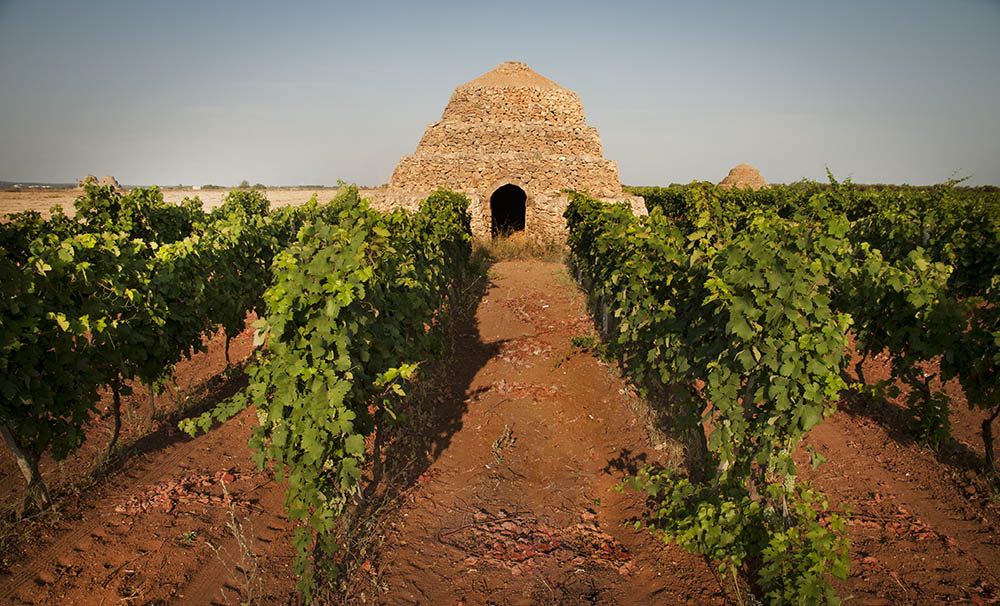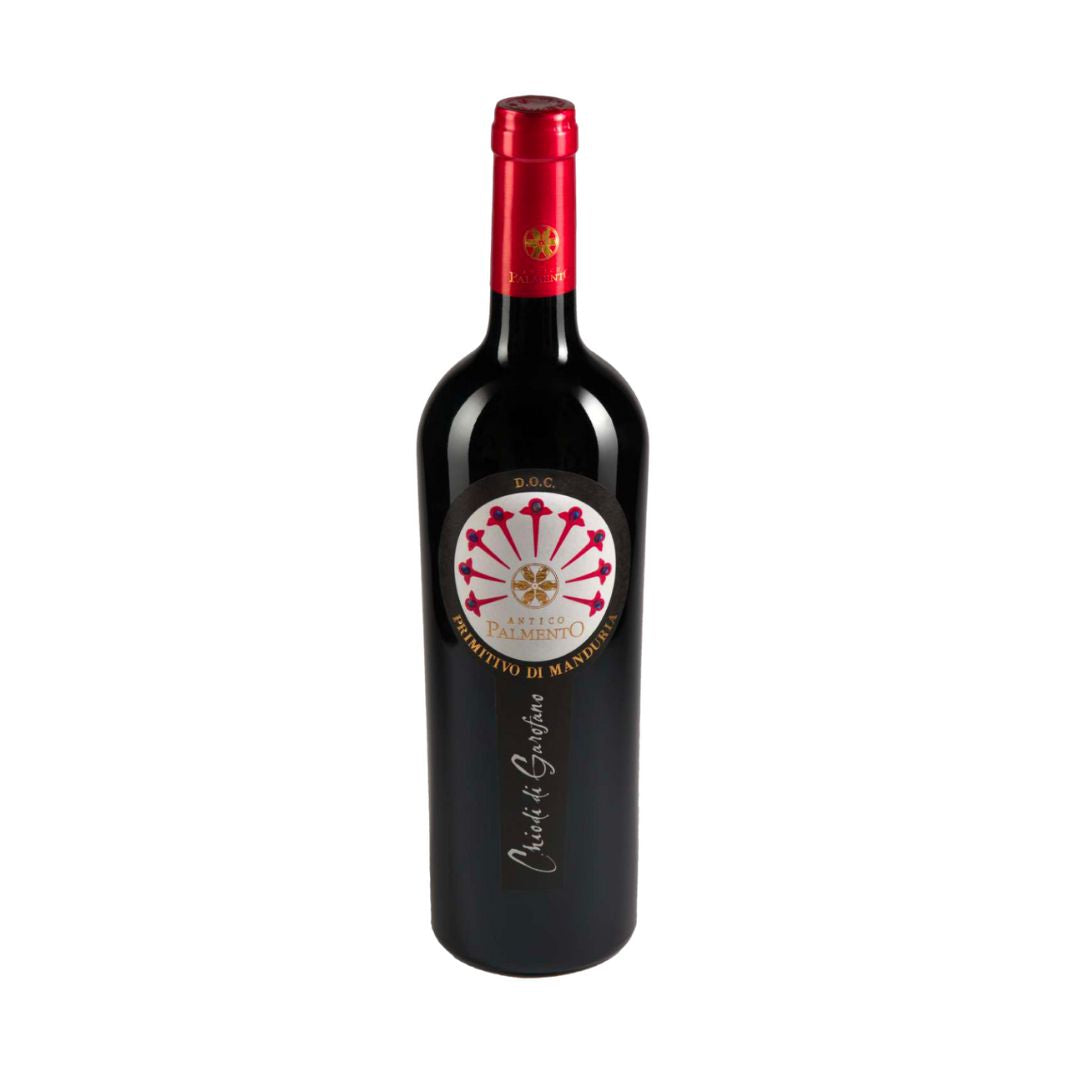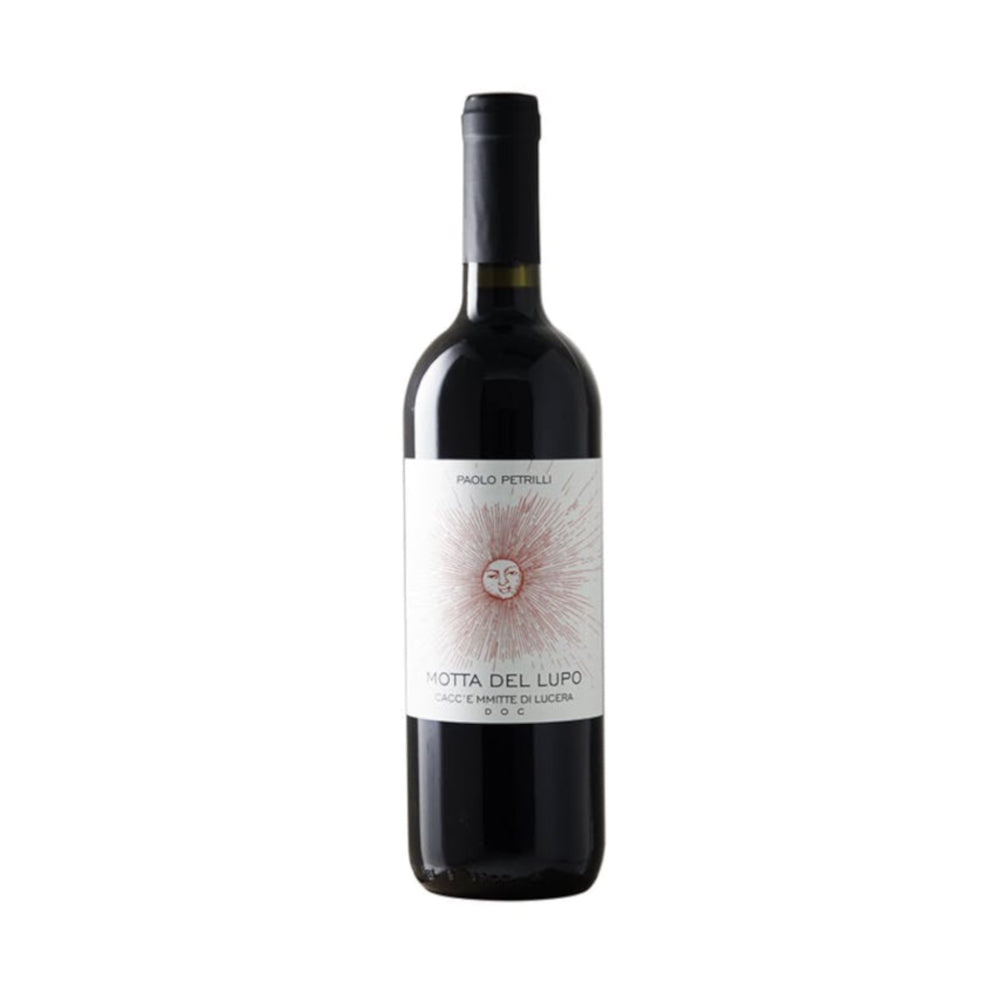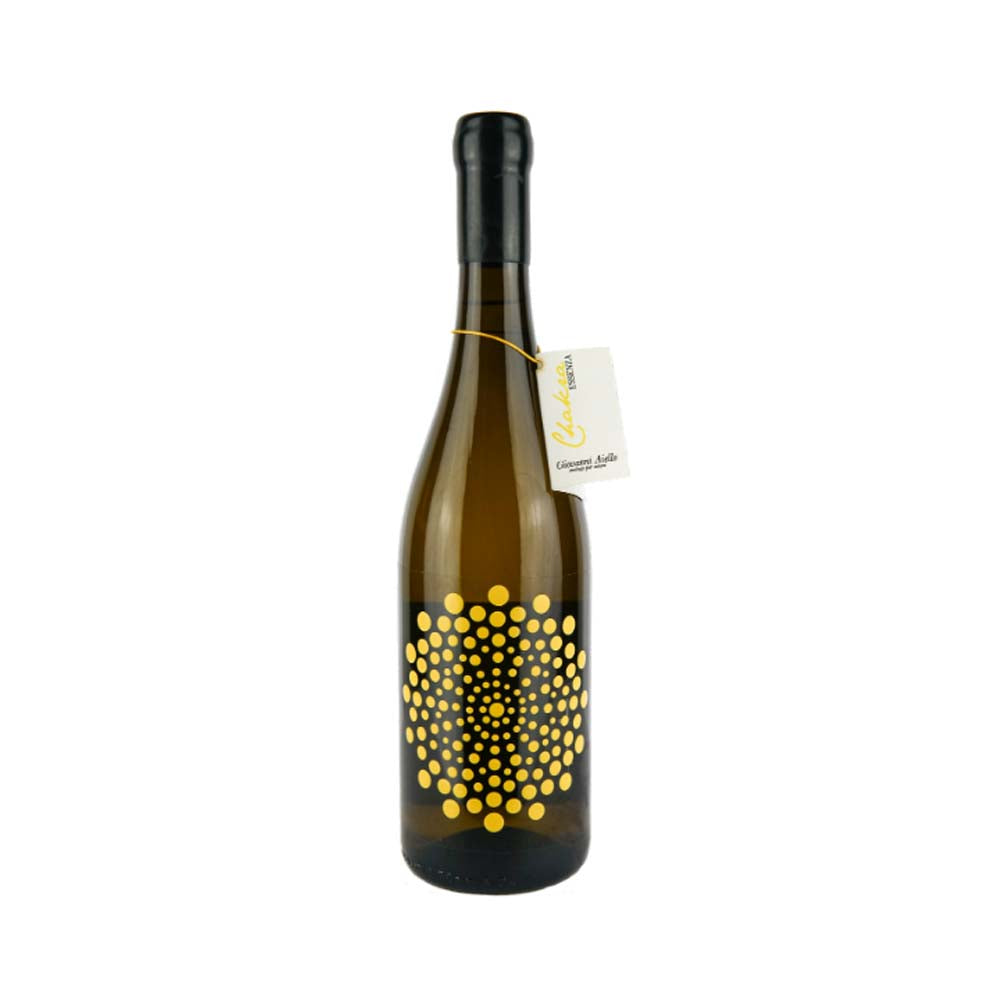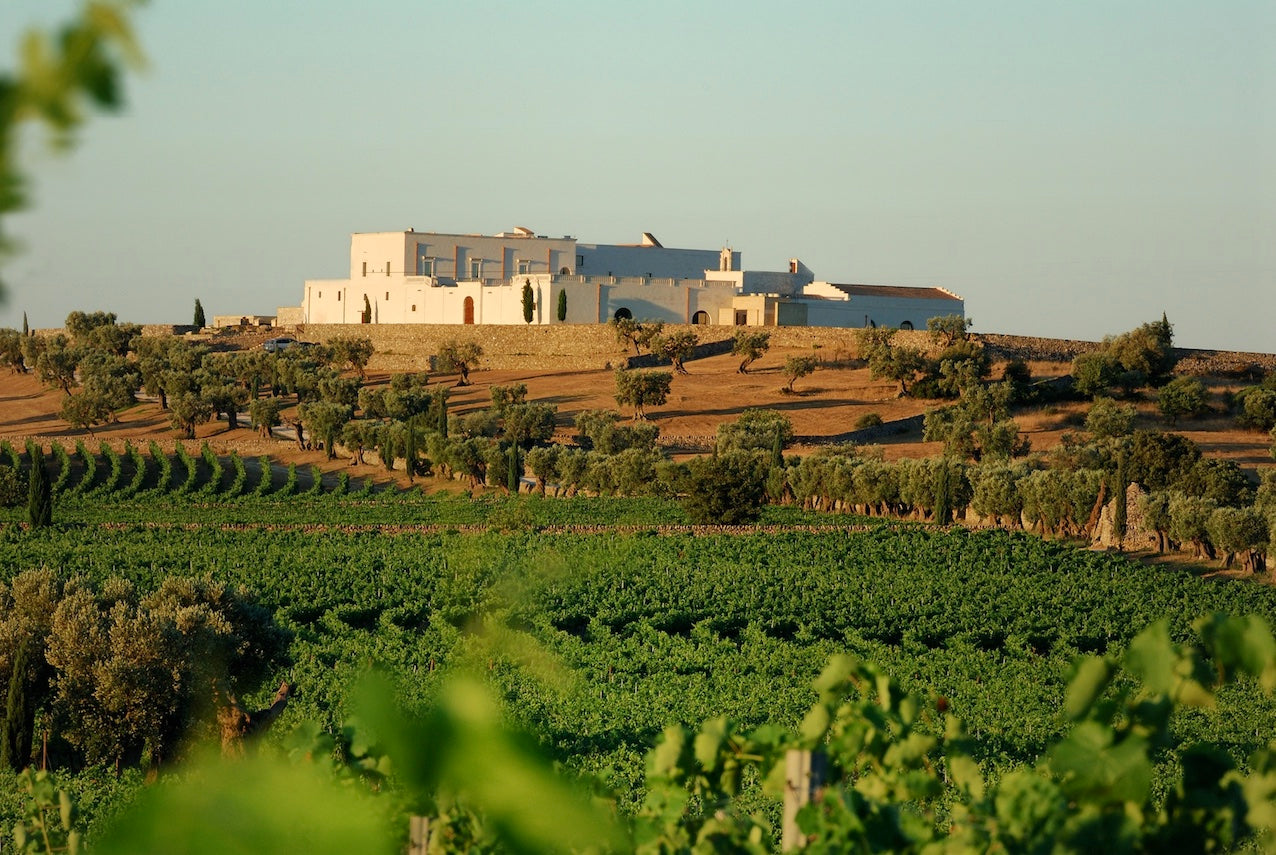FINE APULIAN WINES
5 Unique and Exclusive Reds and 5 Whites
If you love wine and want to discover extraordinary bottles, Puglia is a region that deserves the attention of wine lovers and the curious.
With a winemaking history that dates back to Roman times and a Mediterranean climate that is simply ideal for growing vines, Puglia is renowned for the production of mainly red and rosé wines but there is no shortage of quality whites that will leave you speechless.
In this article, we guide you to discover the finest Apulian wines, to help you make the perfect choice.
What are we talking about:
- Production areas of the finest wines
- The most common vines
- Native vines
- Non-native and international vines
- DOCG, DOC and IGT recommended by our sommeliers
- The numbers of Puglia wine
- 5 fine and exclusive Apulian red wines
- 5 fine and exclusive white wines, sparkling wines and rosés from Puglia
- FAQ
The production areas of the finest Apulian wines
Puglia is divided into different wine-growing areas, each with its specific characteristics. The main ones are three and include Daunia, Murgia and the Salento Peninsula:
Daunia (FG)
This region of the province of Foggia includes the Gargano promontory, the Dauni Mountains and the Tavoliere delle Puglie. Here there are several DOCs, including San Severo, Rosso di Cerignola, Cacc'emmìte di Lucera and Orta Nova, the most common vines are Uva di Troia, Montepulciano, Sangiovese.
Murgia (BAT-BA)
The hilly plateau of the Murge, in the provinces of Barletta Andria Trani and Bari, is characterized by limestone rocks and is famous for the DOCGs of Castel del Monte Bombino Nero, Rosso Riserva and Nero di Troia Riserva, in addition to the DOCs of Moscato di Trani and Gioia del Colle.
Salento Peninsula (TA-BR-LE)
This area, located between the Adriatic Sea and the Ionian Sea, in the provinces of Taranto, Brindisi and Lecce, is ideal for the cultivation of olive trees and vines. Salento is characterized by red ocher soil due to the high presence of iron silicates and rich in limestone and clay. The Lecce stone is famous, made up of calcium carbonate and rich in microfossils. Numerous DOCs are found here, including Primitivo di Manduria, Alezio, Salice Salentino, Copertino, Lizzano, Nardò, Matino, Galatina and Squinzano.
Viticulture in Salento owes a lot to Severino Garofano (1935-2018), an Irpinian oenologist who changed the fate of Salento oenology thanks to the enormous work done to bring Negroamaro to levels of maximum excellence: first in the Cantina Sociale, then founder of the company of the same name, has contributed to the production of quality wines in Salento.
91.750
Hectares of vineyards
13.000
Organic hectares
10.8 million Hl
Produced in 2022
The most common vines
Puglia is known for a wide variety of native and non-native grape varieties that give rise to high-quality wines.
Here are the most common grapes in Puglia.
Typical native vines
The typical white grape varieties of Puglia are the following:
🥂 Bianco d'Alessano; Bombino Bianco (Bonvino); Francavidda (Francavilla); Minutolo; Verdeca or Pampanuto.
The black berry ones instead:
🍷 Black Bombino; Malvasia Nera di Lecce; Malvasia Nera di Brindisi; Negroamaro; Black (Grape) of Troy; Notardomenic; Ottavianello; Primitivo di Manduria; Susumaniello.
International vines
Non-native and international grapes are also grown in Puglia.
The main ones are: Sangiovese, Montepuciano, Chardonnay, Cabernet Sauvignon, Syrah, Trebbiano Toscano, Malvasia and Riesling.
Which Apulian wines to buy? DOCG, DOC and IGT recommended by our sommeliers
One thing to know about Apulian wines is that today some DOCs of Puglia are little recognized (among these: Alezio, Matino and Nardò), for various reasons including the relocation of vineyards and farms. For this reason many Apulian wines, even high quality ones, are IGT. We must therefore not be fooled by the classic scheme.
Puglia offers a wide range of extraordinary wines, each with its distinctive characteristics.
The production of quality wines in Puglia has in fact experienced considerable development since the 90s of the last century. Before this, Puglia was well known for the production of blended wines, especially in Northern Italy.
However, since the 1990s, there have been significant changes in the approach of Apulian producers to viticulture and oenology and today there are absolute gems to be found.
Here are some indications to orient yourself among the denominations and wines to try suggested by our sommeliers:
Castel del Monte Nero di Troia Riserva DOCG: A full-bodied and structured red wine, made mainly with the Nero di Troia grape variety (min. 90%). It must age at least 2 years, one of which in wood, before being put on the market. Perfect for special occasions.
Primitivo di Manduria DOC: An intense red made mainly with the Primitivo grape (min. 85%). It has notes of ripe black fruit and spices. With the mention Riserva it must be aged for at least 2 years before being marketed.
Salento DOC: Controlled designation of origin which includes whites, reds and rosés produced in the provinces of Brindisi, Lecce and Taranto with a vast number of grapes. The grape variety is indicated when at least 85% of it is present. The rosés are very famous: must try!
Salice Salentino DOC: This denomination offers a variety of wines, including whites, reds and rosés. For example, Salice Salentino Rosso must be made mainly with Negroamaro (minimum 75%). Salice Salentino Rosato is a fresh and very pleasant option.
IGT Puglia: This typical geographical indication offers a certain flexibility in production and reserves great surprises for the quality that small Apulian producers especially pursue. You can find white, red and rosé wines under this category, often made with a variety of native and non-native vines of the highest quality: especially in Puglia, IGTs must be kept an eye on.
IGT Salento: Again under the typical geographical indication, this time of Salento, special labels can be found. Among these the Primitivo IGT Salento which offers the typicality of the vine of one of the most important grapes of Puglia in a carefree key.
Valle d'Itria IGT: The IGT Valle d'Itria is a denomination that embraces the Valle d'Itria region and is able to reflect with. For white wines, this IGT offers a wide range of sensory experiences. The whites of IGT Valle d'Itria are often characterized by a fresh and fruity flavor profile, with hints of white fruit and citrus fruits, supported by a pleasant acidity.
Cacc'e Mmitte di Lucera DOC: obtained from 35 to 60% Uva di Troia; Montepulciano, Sangiovese, Malvasia nera di Brindisi between 25 and 35%; Tuscan Trebbiano, white Bombino and Malvasia Bianca and/or Bianca Lunga between 15 and 30%. A dry, full-bodied and structured red, with a balanced level of acidity and tannins.
4
DOCG
15
DOC
6
IGT
The numbers of Apulian wine
Puglia is the second region in Italy for production (after Veneto). It represents a very important slice of Italian wine, both for IGT (16% of the total) and for common wine (43% of the total).
In Puglia there are approximately 91,740 hectares of vineyards (ISTAT 2022 data).
The region has 4 DOCG, 15 DOC and 6 IGT .
The annual production in 2022 was 10.8 million hectoliters of wine (+13% on 2021, ISTAT 2022 data). This is a record 40% higher than the historical average for the years 2012-2021. The increase is mainly due to the increased production of IGT and DOC , while the production of common wine decreased by 3% compared to 2021.
The grapes produced in 2022 were 16.4 million quintals. The average grape yield in 2022 was 179 quintals per hectare. The province with the highest yield was Foggia; the province with the lowest yield is Lecce (ISTAT 2022 data).
Puglia is the second most organic region in Italy with over 320,000 hectares where organic farming is practiced. The organic vineyards in particular occupy approximately 19 thousand hectares .
5 fine and exclusive Apulian red wines
5 Fine and exclusive Apulian sparkling wines and rosés
Compose your box of Apulian wines with the advice of our Sommeliers
Do you also want to discover the best bottles of Puglia?
Get advice from our sommeliers and start discovering the wine treasures of the region today thanks to territorial selections designed based on your needs and tastes.
Our sommeliers will create selections of Apulian wines for you that will allow you to savor the best of the region's wines, based on your budget and your needs. The box will be an authentic sensorial adventure, in which to explore the aromas, flavors and history of an entire territory behind every sip.
Whether you are an expert in the sector or a wine enthusiast looking for new experiences or even if you don't know Apulian wines at all, Sommelier Wine Box will offer you a tailor-made selection, adapted to your desires and you will be able to build your own collection of fine labels.
In addition to the quality and authenticity of niche wines, we offer a flexible service and deliver conveniently to your home.
Choose Sommelier Wine Box and enjoy a unique journey into the heart of the winemaking tradition of one of the wine territories of Puglia.
FAQ on Apulian Fine Wines
How to understand which Apulian wine to buy?
Finding your way among Apulian wines is not easy because the region has a particularity: it produces wines of absolute quality, even as IGT. In addition to the quality of the wines, it is essential to know your tastes in wines, and therefore understand which characteristics you like most and which least.
If you are not familiar with Campania wines, it is important to rely on experts who can guide you in purchasing and recommend the most suitable wines. For those approaching the world of wine, the advice is to first try the great classics, that is, the wines that make the history of the region, trying the most important classic vines: Primitivo di Manduria, Aglianico, Verdeca, white and black Bombino.
When purchasing wines from Puglia it is essential not to neglect IGTs: if well selected, they reserve great surprises.
The rosés of Salento are absolutely worth trying.
Where to buy fine Apulian wines?
To buy fine wines from Puglia there are various possibilities: you can physically go to a wine shop , you can use online e-commerce to save time, you can opt to purchase directly in the cellar , especially during the summer holidays.
An excellent alternative to save time and receive only wines that reflect your needs and tastes is to get advice from a dedicated sommelier using the Sommelier Wine Box digital service. A sommelier at your disposal, only niche wines selected for you and shipped directly to your home.
How to orient yourself among the wines of Puglia?
Finding your way among Apulian wines is not easy because the region has a particularity: it produces wines of absolute quality, even as IGT. In addition to the quality of the wines, it is essential to know your tastes in wines, and therefore understand which characteristics you like most and which least.
The choice depends first and foremost on your personal tastes.
In general, if you love full-bodied red wines, opt for a Primitivo di Manduria or a Negroamaro. If you love fresh whites, try the excellent Verdeca. If you love rosés, Puglia is really for you: Salento has an extraordinary tradition of pink wines, all to be discovered.
If you don't know Apulian wines, it is important to rely on experts who can guide you in purchasing and recommend the most suitable wines.
For those approaching the world of wine, the advice is always to try the great classics first , that is, the wines that make the history of the region, trying the most important classic vines: Primitivo di Manduria, Aglianico, Negroamaro for the reds; Verdeca, White Bombino.
When purchasing wines from Puglia it is essential not to neglect IGTs: if well selected, they reserve great surprises.
The rosés of Salento are also absolutely worth trying.
Try Sommelier Wine Box to be guided on a journey of discovery of Apulian wine cut for you by our sommeliers.
What are the best wines from Puglia?
The wines of Puglia are known for their richness, variety and distinctive character.
Red Wines: Puglia is very famous for its reds. Made from native grapes such as Primitivo, Negroamaro, Bombino nero, Nero di Troia and others, these are often full-bodied wines, with well-present tannin and a good alcohol content, due to the hot climate which raises the level grape sugar (which in winemaking is then transformed into alcohol).
Rosé Wines : Puglia is very renowned for the production of rosé wines, some truly exceptional. Produced with short maceration on the skins from black grapes, they offer a pleasant alternative to reds and whites and are perfect for those looking for freshness and character in their glass.
White Wines: Puglia also produces high quality white wines. Grape varieties such as Fiano, Verdeca and Bianco d'Alessano give fresh whites with character.
Sweet Wines: The region offers a selection of sweet wines, including the famous Moscato di Trani. These wines are characterized by a rich aromatic profile and balanced sweetness, making them ideal for desserts or special tasting moments.
Some of the most interesting denominations are: Castel del Monte Nero di Troia Riserva DOCG, Primitivo di Manduria DOC, Cacc'e Mmitte di Lucera DOC, Salento DOC, Salice Salentino DOC, Puglia IGT, Salento IGT, Valle d'Itria IGT.
How many wineries are there in Puglia?
Viticulture in Puglia includes around 11,000 agricultural companies and around 600 wineries ( source: Chambers of Commerce, 2020 ).
Which DOC, DOCG and IGT wines are there in Puglia?
Here is the list of DOCG, DOC and IGP of Puglia:
DOCG (Controlled and Guaranteed Designation of Origin):
- Castel del Monte Nero di Troia Riserva DOCG: This DOCG focuses mainly on the production of red wines using the native Nero di Troia grape variety.
- Castel del Monte Bombino Nero (Rosato) DOCG: This is an exception in the production of rosé wines in Puglia, where the Bombino Nero grape variety is used to produce high-quality rosé wines.
- Castel del Monte Rosso Riserva DOCG: This DOCG focuses on the production of red wines from native and non-native grapes.
- Primitivo di Manduria Dolce Naturale DOCG: This DOCG is known for its natural sweet wines based on Primitivo.
DOC (Controlled Designation of Origin):
- San Severo DOC: Produces red, white and rosé wines in different variations.
- Rosso di Cerignola DOC: Focuses on the production of red wines.
- Cacc'e Mmitte di Lucera DOC: Produces red and white wines, including rosé and sparkling wines.
- Castel del Monte DOC: This DOC produces a variety of wines, both red and white, with a particular emphasis on native grapes.
- Galatina DOC: Focuses on the production of red wines using mainly Negroamaro grapes.
- Leverano DOC: This DOC is known for the production of red wines.
- Lizzano DOC: Mainly produces red wines using native grapes.
- Martina Franca DOC: This DOC mainly produces dry white wines.
- Nardò DOC: Focuses on the production of red wines using the Negroamaro grape.
- Orta Nova DOC: This DOC produces a variety of wines, including whites, reds and sparkling wines.
- Primitivo di Manduria DOC: This is one of Puglia's best-known DOCs, with an emphasis on Primitivo-based red wines.
- Salice Salentino DOC: Produces both red and white wines.
- Squinzano DOC: Focuses on the production of red wines using the Negroamaro grape variety.
- Terra d'Otranto DOC: Produces mainly red and white wines.
- Valle d'Itria DOC: This DOC produces both red and white wines, with a particular emphasis on quality.
PGI (Protected Geographical Indication):
- Daunia PGI: Produces a variety of wines, both red and white.
- Murgia PGI: Focuses on the production of red wines.
- Puglia PGI: This PGI covers the entire region of Puglia and is known for the production of red, white and rosé wines.
- Salento PGI: Produces a variety of wines, including those made from Negroamaro grapes.
- Tarantino PGI: Mainly focuses on the production of red wines.
- Vallée d'Itria PGI: Produces both red and white wines.
- Gargano PGI: Focuses on the production of red and white wines.
- Magnesia PGI: Mainly produces red wines.
- Murgia dei Trulli PGI: Focuses on the production of red wines.
- Terre Tarentine PGI: Produces a variety of wines, including those made from native grapes.
What are the typical grape varieties of Puglia?
Black Berry (Red Grapes):
- Primitivo: A black grape variety known for its intense and fruity red wines.
- Negroamaro: This grape variety produces full-bodied and rich black red wines.
- Nero di Troia: Mainly used for red wines characterized by structure and complexity.
- Aglianico: Although originally from Campania, Aglianico is also grown in Puglia to produce robust red wines.
- Malvasia Nera di Lecce: A black grape variety used in the production of red and rosé wines.
- Bombino Nero: Often used for the production of fresh and fruity rosé wines.
- Primitivo Nero: A variant of the black Primitivo with concentrated fruity notes and structure.
White Berry (White Grapes):
- Fiano: An indigenous grape variety from Campania that finds a perfect terroir in Puglia, used to produce aromatic and complex white wines.
- Verdeca: A native white grape variety used in the production of very interesting fresh white wines.
- Bianco d'Alessano: Used for light and fresh white wines.
- Greco: A native white grape variety from Campania which finds a perfect setting in Puglia, used in the production of dry and aromatic white wines.
- Minutolo: Also known as Moscatello Selvatico, it is used in the production of aromatic white wines.
- Pampanuto: Another native white grape variety used for white and sparkling wines.
How many wineries are there in Puglia?
Wine viticulture in Puglia includes around 11 thousand agricultural companies and around 600 wineries (source: Chambers of Commerce, 2020 ).
What are the most prized Apulian wines?
Here are some of the finest Apulian wines:
Primitivo di Manduria DOCG: This red wine is one of the most famous in Puglia, known for its richness and complexity. It has an intense color, aromas of ripe fruit and a round and enveloping flavour. Also excellent for storing in the cellar.
Castel del Monte Nero di Troia Riserva DOCG: This DOCG produces robust and structured red wines based on the native Nero di Troia. They are known for their intensity and depth.
Salice Salentino DOC: This denomination is renowned for its rich and full-bodied red wines based on Negroamaro grapes.
Primitivo di Manduria DOC: Another Primitivo-based wine produced in Salento: complexity and structure.
Cacc'e Mmitte di Lucera DOC: This DOC produces robust red wines made from Nero di Troia and Montepulciano grapes. They are structured wines and suitable for aging.
Valle d'Itria PGI: This protected geographical indication covers a large area in Puglia between the provinces of Bari, Brindisi and Taranto and is known for its fresh, aromatic white wines, often made from Verdeca and Bianco d'Alessano grapes.
Puglia PGI: This PGI offers a wide range of wines, both red and white, from different native and non-native grapes. It can reserve real surprises.




